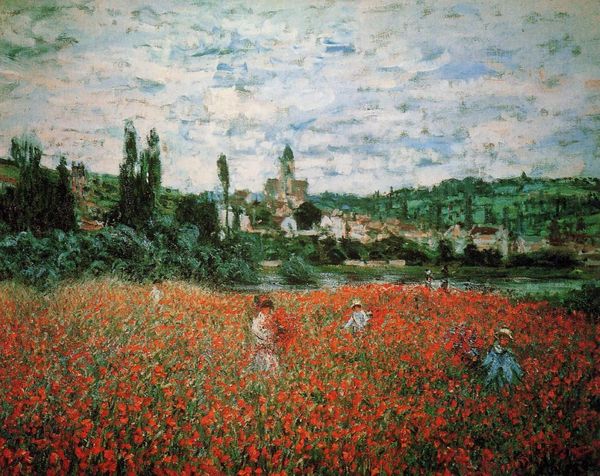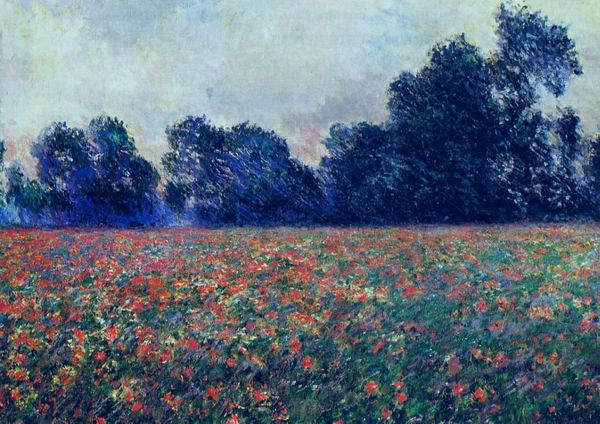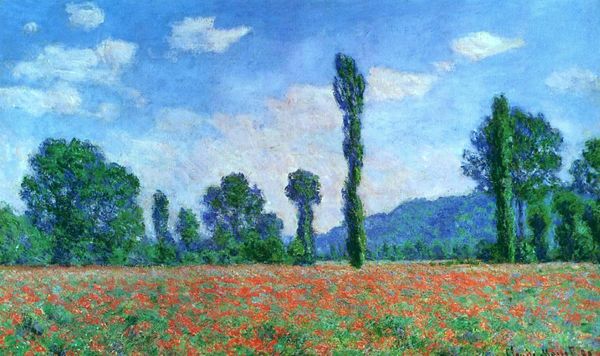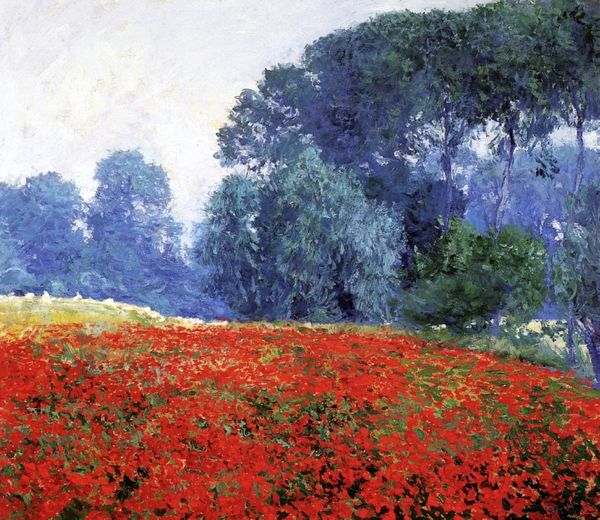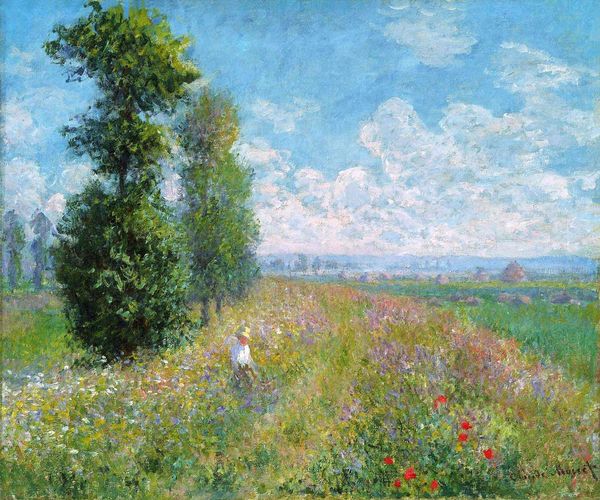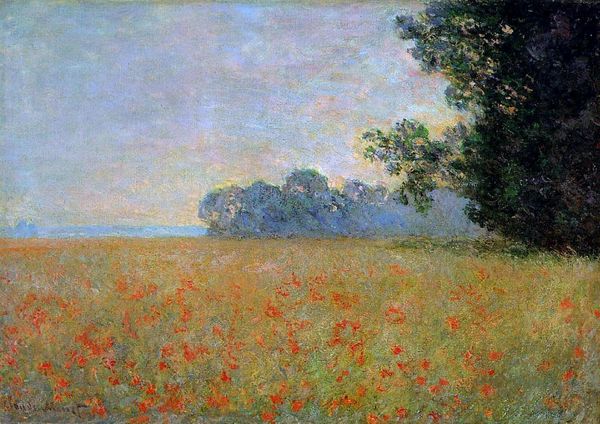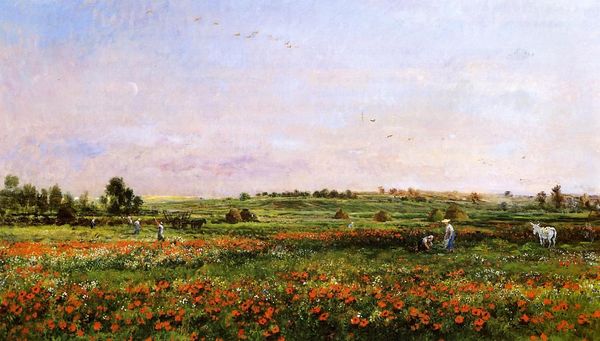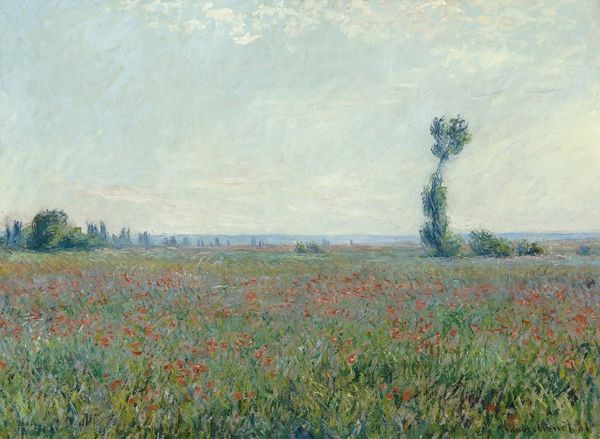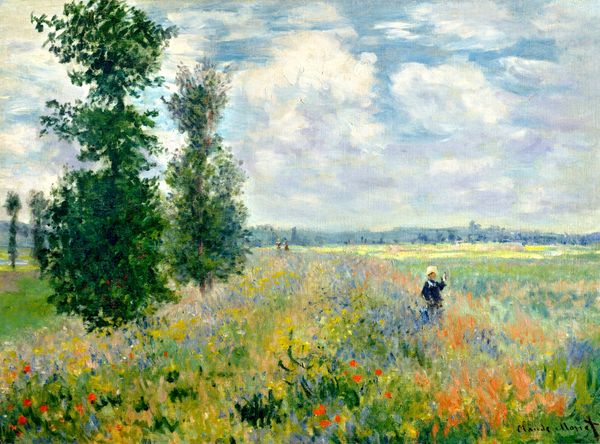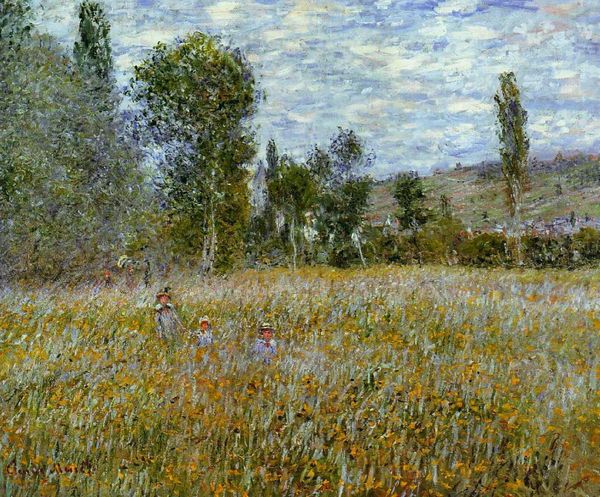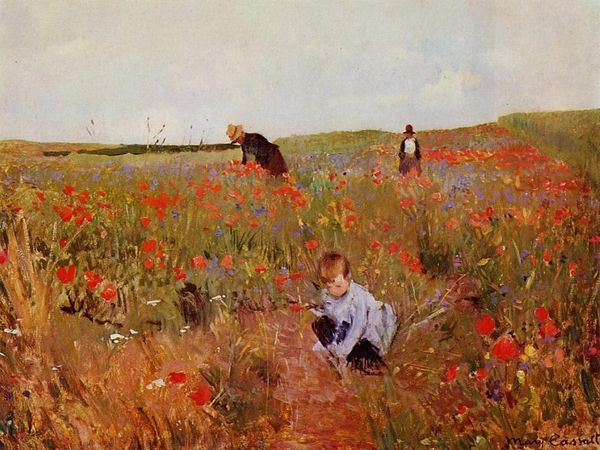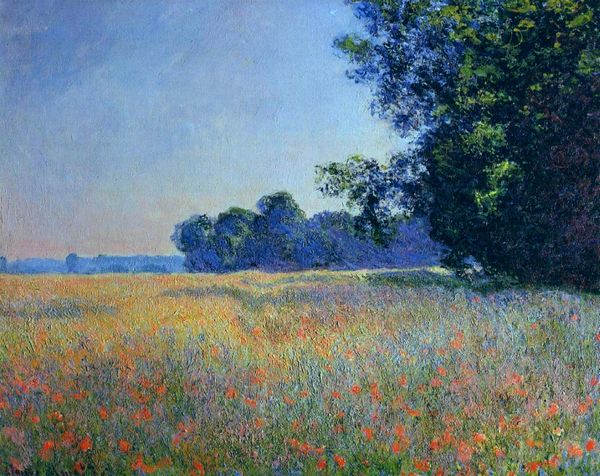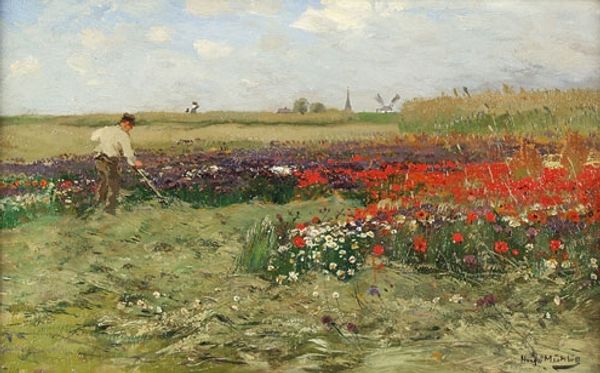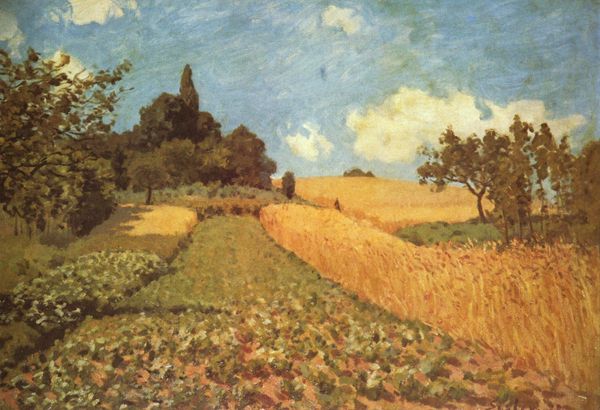
Copyright: Public domain
Editor: We are looking at "Field of Poppies," an 1873 oil on canvas by Claude Monet, housed in the Musée d'Orsay. I am really drawn in by the hazy, dreamlike atmosphere. How would you interpret this field of red? Curator: Oh, isn’t it just glorious? When I look at this, I'm immediately transported to a sun-drenched afternoon. Imagine yourself there: the scent of wildflowers, the buzzing of bees... Monet wasn't just painting poppies; he was painting a feeling, a moment in time, fleeting and beautiful. It is a symphony of color, a little bit wild, yet harmonious. Do you notice how he contrasts the vibrant reds with those soft blues and greens? Editor: Absolutely, it feels both chaotic and very intentional, especially the figures. The woman and child are a delightful touch, adding a touch of narrative to this explosion of color! Curator: Indeed! They are often interpreted as Monet’s wife and son. They add scale and a sense of intimacy. Also, it is thought he painted it en plein air - you can almost feel that breeze rippling through the flowers. It is far from photo-realism – Monet wants you to *feel* the field more than simply *see* it. Isn't it freeing, this emphasis on the emotional impact? Editor: Definitely. It gives permission to connect with the artwork on a personal, intuitive level. It is no longer just a landscape. Curator: Precisely! I feel that connection is the point of Impressionism, or art in general. This wasn’t merely Monet depicting nature, but something altogether deeper… a whisper of pure sensation captured for eternity.
Comments
No comments
Be the first to comment and join the conversation on the ultimate creative platform.
